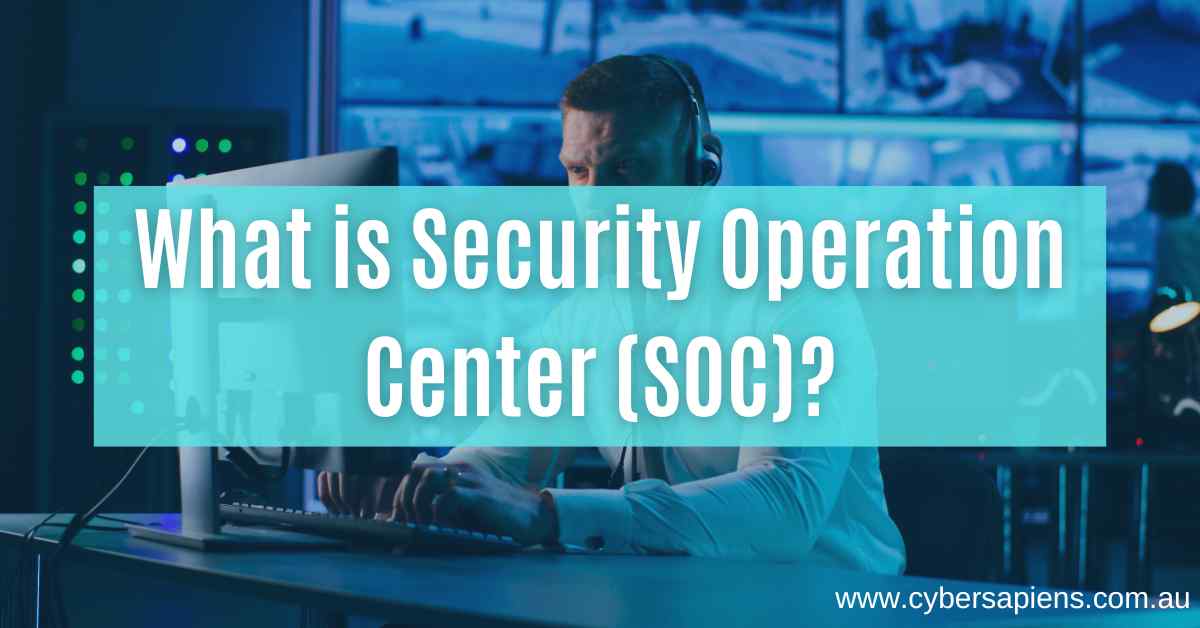In today’s interconnected world, where cyber threats are evolving at an alarming pace, each and every organization face a constant battle to protect their valuable digital assets.
Thus in order to combat this ever-growing issue, many businesses have turned to implement a powerful defense mechanism known as a Security Operation Center (SOC).
But What is the Security Operation Center (SOC)?
A Security Operations Center (SOC) is a centralized unit within an organization’s infrastructure that proactively monitors and defends against cyber threats.
It also serves as the nerve Center for an organization’s handling the cybersecurity operations, thereby providing continuous monitoring, incident response, and threat intelligence capabilities.
The SOC team also acts as the primary point of contact for managing and mitigating security incidents. Before setting up the Security Operation Center, organizations must also be involved in developing an overarching cyber security strategy that aligns with their business objectives and challenges. Many large-scale organizations have an in-house SOC but others opt to outsource the SOC to third-party managed security services providers.
Table of Contents
Components of SOC

SOC consists of several essential components that work in unison to ensure comprehensive security coverage which are as follows
- Monitoring and Detection Tools: These component encompass a wide range of security technologies, that involves Intrusion Detection Systems (IDS), Security Information and Event Management (SIEM) platforms, Endpoint Detection and Response (EDR) systems, and network traffic analyzers. These tools mainly collect and analyze all the security data from various sources, which helps enable SOC analysts to identify potential threats and vulnerabilities within them.
- Incident Response Team: The incident response team involves a skilled cybersecurity professional who possesses expertise in threat detection, incident analysis, and incident response. They play a very crucial role in investigating and performing security incidents, minimizing damage, and restoring normal operations.
- Threat Intelligence: SOC teams rely on threat intelligence sources to stay frequently updated on the latest cyber threats, attack vectors, and emerging vulnerabilities. This information empowers SOC analysts to proactively identify and mitigate the potential risks detected before they can cause significant damage.
- Security Information and Event Management (SIEM): SIEM platforms are used to collect and correlate security events and logs from various systems and devices within an organization’s IT infrastructure. They also provide a centralized view of the security landscape, that helps the SOC analysts to detect and investigate anomalies, thereby enabling a timely response to security incidents.
Functions of SOC

- Prevention and detection: A SOC team works in order to monitor the network around the clock. Thus by doing so, the SOC team can detect malicious activities and further prevent them before they can cause any severe damage. As when the SOC analyst detects something suspicious, they gather as much information as they so that they can undergo a deeper investigation.
- Investigation: During this investigation stage, the SOC analyst initially analyzes the suspicious activity in order to determine the threat nature and the extent to which it has penetrated the infrastructure. The security analyst also views the organization’s network architecture and operations from an attacker perspective thus looking for key indicators and areas of exposure prior they are exploited. The SOC analyst then identifies and performs triage on various types of security incidents by understanding how the attacks unfold, also how to effectively respond before they get out of control. The SOC analyst combines the information about the organization’s network architecture with the latest global threat intelligence which includes attacker tools, the techniques, and trends involved in performing an effective triage.
- Response: After the investigation phase, the SOC team coordinates a response to remediate the issue detected. As soon as an incident is confirmed, the SOC analyst acts as a first responder, performing actions such as isolating the endpoints, terminating harmful processes, deleting suspicious files, and many more. After an incident occurs, the SOC team works to restore the systems and recover any lost or compromised data. This can include wiping and restarting the endpoints, reconfiguring the systems, or, in the case of ransomware attacks, deploying viable backups in order to circumvent the ransomware. When successfully achieved, this step will then return the network to the state it was in prior to the incident.
Benefits of SOC

- Enhanced Threat Detection and Response: A SOC team uses advanced monitoring tools, with skilled analysts, that significantly shall improve an organization’s ability to detect and respond to security incidents in real-time. This kind of swift response will help to minimize the impact of breaches, to reduce downtime, and also to protect sensitive data.
- Proactive Risk Mitigation: SOC experts actively hunt for various threats and vulnerabilities, thus allowing organizations to proactively address the detected weaknesses before they are exploited. Thus by staying ahead of all potential risks, businesses can minimize the impact of cyberattacks.
- Centralized Security Management: A SOC team offers a complete centralized view of an organization’s security infrastructure, providing a holistic perspective on potential threats and vulnerabilities. This type of approach will enable effective coordination, streamlined incident response, and also provide better utilization of security resources.
- Compliance and Regulatory Alignment: Many industries are subjected to stringent regulatory requirements that are concerning data privacy and security. A SOC team here helps the organizations to align with these regulations thus implementing robust security controls, which helps in maintaining audit trails, and promptly reporting security incidents as and when needed.
- Improved Incident Analysis and Reporting: SOC team captures and analyzes vast amounts of security data, by enabling deep insights into security incidents and trends. Also, these insights will facilitate informed decision-making, followed by enhanced incident response, and the ability to fine-tune security measures depending on the actionable intelligence gathered.
SOC Challenges

Mainly every organization focuses on adding new software for threat detection, and because of this, the volume of security alerts grows continually.
The overwhelming number of threat alerts that occur can cause threat fatigue. In addition, many of these alerts do not provide sufficient intelligence, or context to investigate, or are false positives. False positives result not only waste time and resources, but it can also distract teams from detecting and investigating real incidents.
Many organizations also use an assortment of disconnected security tools which means these security personnel must translate the security alerts and policies between environments, leading to costly, complex, and inefficient security operations.
Even amid expensive, damaging cyber-attacks, the security teams do struggle with limited budgets. Analysts understand that there are solutions available to improve security performance, like dwell time, MTTD, and MTTR. But if the budget isn’t there, then SOC analysts are stuck manually triaging these critical threats.
Conclusion: What is Security Operation Center?
In an era that is something dominated by ever-evolving cyber threats, The Security Operation Center (SOC) is one of the indispensable elements of an organization’s cybersecurity strategy.
It provides constant vigilance, and swift incident response, followed by proactive threat mitigation, which is necessary to protect an organization’s digital assets. By investing in a SOC, businesses can fortify their defenses, detect and respond to security incidents in real-time, and that helps them to stay one step ahead of cybercriminals.
Due to the increasing importance of cybersecurity in today’s digital landscape, a SOC team becomes a necessity for any organization aiming to safeguard its valuable information and maintain customer trust.
About the Author!













